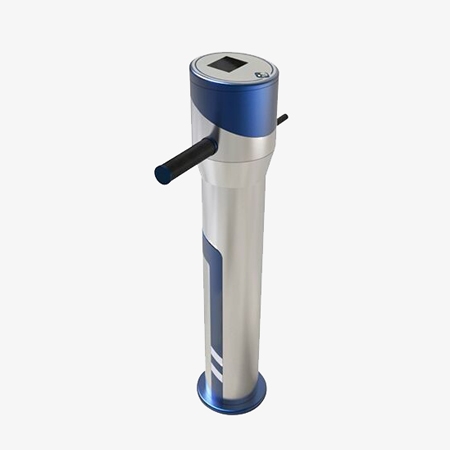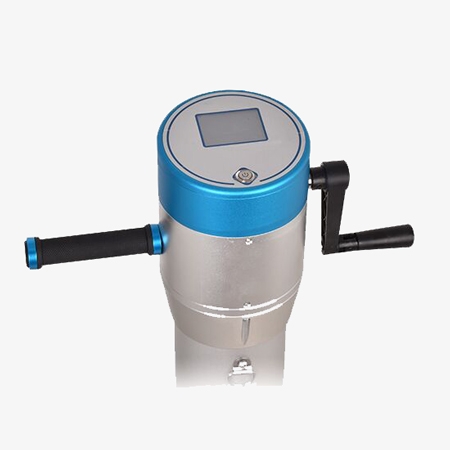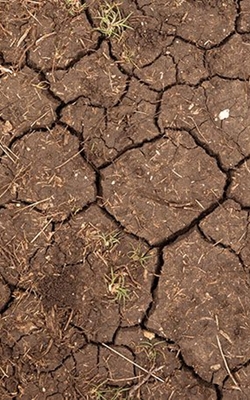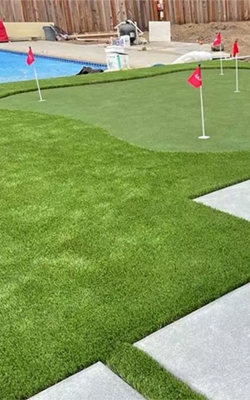The SISCO digital soil penetrometer is a portable, user-friendly device designed to quickly and accurately measure soil compaction. It is widely used in agriculture, landscaping, and construction to assess soil conditions and ensure optimal root growth, water absorption, and overall soil health.

Real-time recording of measurement curves
- The digital soil compaction meter consists of a soil compaction meter, a rotary vernier caliper, and a data storage recorder.
- Automatically stored by stroke, stroke (1-480) mm adjustable (accuracy: 1mm).
- Real-time recording of measurement curves.

Display screen 2.8-inch color TFT LCD
- The digital soil compaction meter has a large capacity flash memory that can store 8000 pieces of data.
- It comes with a GPS positioning function and displays the geographic coordinates of the collection point during data collection.
- The digital soil hardness tester charges for three hours and is used for ten hours.
Application
The digital soil hardness tester is mainly used to measure the compactness of soil, to evaluate the influence of soil structure on crop root growth, water infiltration, and soil aeration. It is applied in the fields of agriculture, horticulture, and greening engineering, infrastructure and construction engineering, and teaching and education.
 Agricultural Soil Testing
Agricultural Soil Testing
 Turf & Landscaping
Turf & Landscaping
 Environmental Study
Environmental Study
 Construction Site Evaluation
Construction Site Evaluation
| Model | SISCO-SCT-LDJSD4H |
| Display | Screen 2.8-inch color TFT LCD |
| Interface Type-C Connector | Charging USB interface: USB flash drive; aviation plug: RS485 |
| Storage | Large capacity FLASH memory; Can store 8000 pieces of data |
| Positioning | GPS/BD/GLONASS |
| Upload | 2G/3G/4G/WiFi |
| Battery | 12V 3000mAh lithium battery (working time: 10H; charging time: 3H) |
| Export | USB flash drive, export Excel spreadsheet |
| Unit | kg/cm², N/cm², Kpa, Bar, Psi |
| Distance of Run | 480 millimeters, accuracy 0.01 millimeters |
| Sensor Range | 0~100kg |
| Sensitivity | 2.0 ± 0.1mv/V |
| Accuracy | 0.1% F ∙ S |
| Repeatability | ± 0.05% F ∙ S |
| Working Temperature | -20 to+70 ℃ |
| Material | Stainless Steel |
Q1: What is the working principle of a digital soil compaction meter?
A1: Digital soil compaction meter refers to the soil resistance equivalent to the vertical pressure when a plunger (or cone) is inserted into the soil, also known as penetration resistance. It is usually measured using a solidity meter (hardness tester). The measured values of the same method are mainly determined by soil texture, capacity, and moisture content. The impact of moisture content is the greatest among them. Digital soil penetrometer can predict soil carrying capacity, tillage ability, and resistance to root extension.
Q2: What is the application scope of the digital soil compaction meter?
A2: The digital soil compaction tester is mainly used to measure the compactness of soil, to evaluate the influence of soil structure on crop root growth, water infiltration, and soil aeration.
- Evaluate soil structure: By measuring soil solidity, the structural condition of the soil can be understood, providing a basis for rational planting, scientific irrigation, and soil health management.
- Optimize agricultural practices: Assist in determining the operational resistance of agricultural machinery in the soil, guide timely plowing, raking and other agricultural activities, and avoid difficulties in sowing and mechanical damage caused by overly tight or loose soil.
- Monitoring the cultivability of farmland: Regularly measuring soil solidity can determine the cultivability of farmland and guide agricultural production.
Q3: Can the digital soil compaction meter measure the compaction degree of other materials?
A3: Some models of instruments may be able to measure the compaction degree of other granular materials, but specific situations need to refer to the technical specifications and usage instructions of the instrument.
Tips: How to operate the digital soil compaction meter?
- The usage method of the digital soil compaction meter may vary depending on the model, but the general steps include calibrating the instrument, inserting the probe into the soil, and reading and recording data.
- Attention should be paid to factors such as soil moisture, temperature, measurement depth, and location selection, which may all affect the measurement results.
- Regularly calibrating the digital soil compaction meter, following operating procedures, and taking the average of multiple measurements at different locations and depths can improve accuracy.
Thank you for buying industrial test and measurement equipment on SISCO.com, all products sold by SISCO and the partner cover a 12 months warranty, effective from the date of receiving the products.
What is covered?
SISCO is responsible for providing free spare parts, and free technical support to assist the customer to repair the defective products until the problem is solved.
What is not covered?
- Product purchased from anyone other than a SISCO store or a SISCO authorized reseller.
- Expendable parts.
- Routine cleaning or normal cosmetic and mechanical wear.
- Damage from misuse, abuse or neglect.
- Damage from use of parts other than SISCO approved.
- Damage from use outside the product’s usage or storage parameters.
- Damage from use of parts not sold by SISCO.
- Damage from modification or incorporation into other products.
- Damage from repair or replacement of warranted parts by a service provider other than a SISCO authorized service provider.
- Damage caused by the application environment not meeting the product usage requirements and the failure to perform preventive maintenance.

